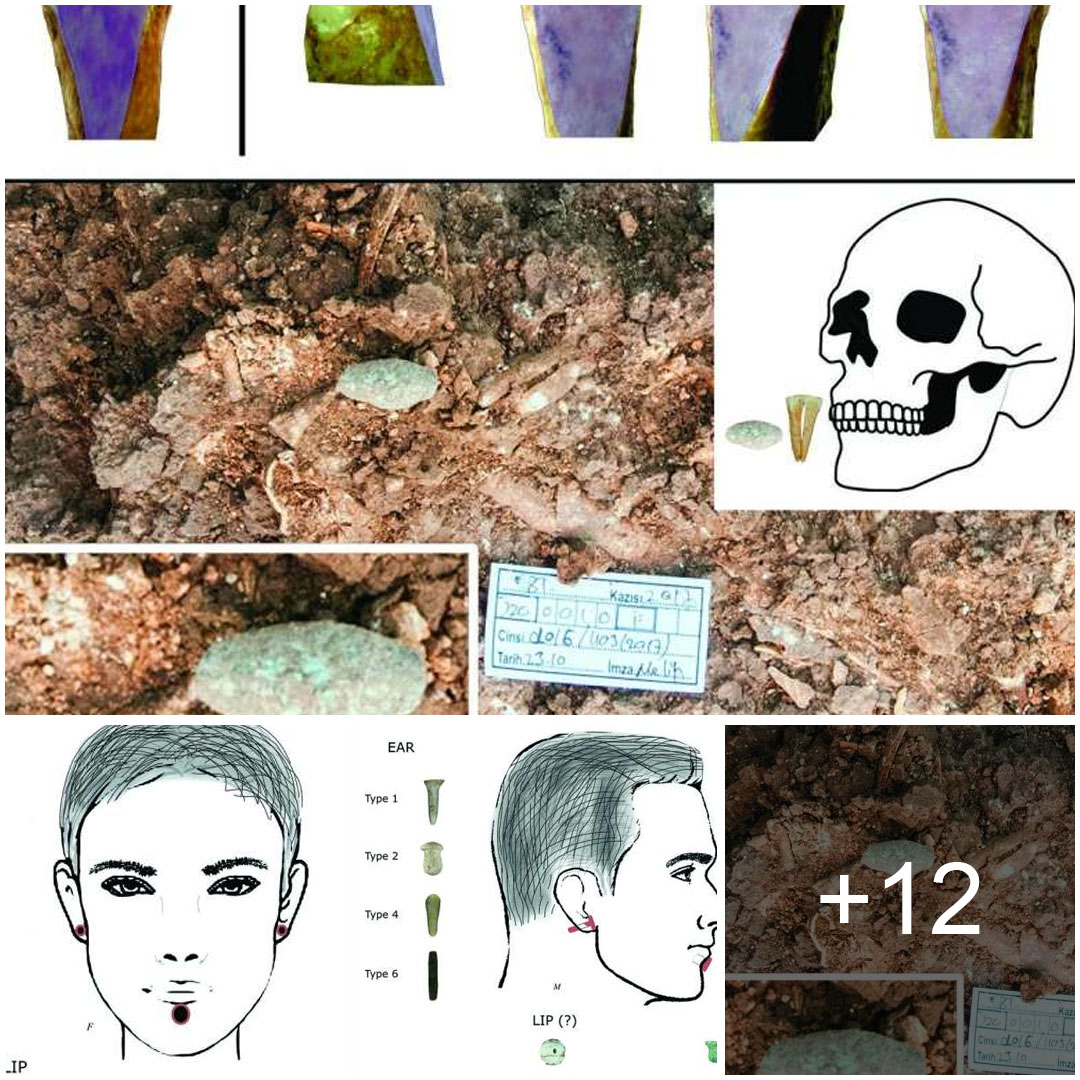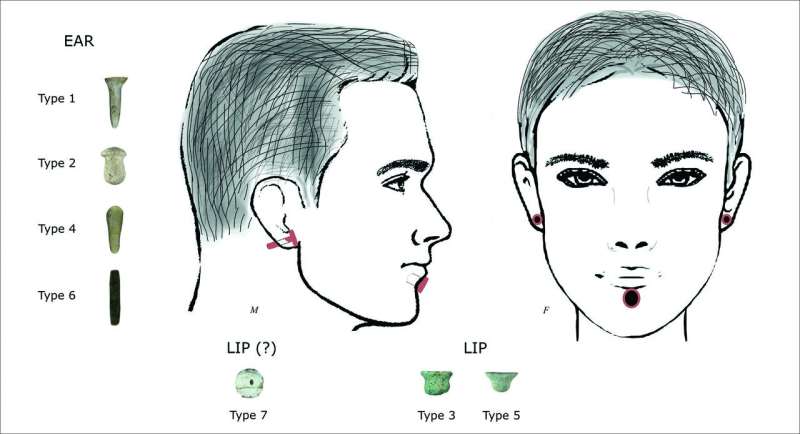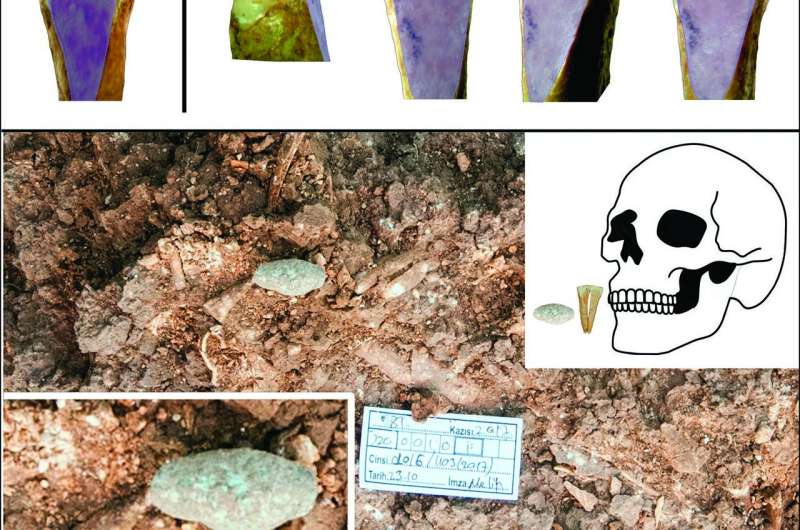

Archaeologists have discovered more than 100 ornaments for use in piercings in ~11,000-year-old adult burials in Türkiye, providing the earliest conclusive evidence for body perforation and suggesting that piercing may have been a coming-of-age ritual.
Earring-like objects have been found at Neolithic sites in South-west Asia before, but there was no clear evidence for their use in piercings.
“We knew that there were earring-like artifacts in the Neolithic, they have been found at many sites,” says co-author of the research, Dr. Emma Baysal from Ankara University. “But we were lacking in situ finds confirming their use on the human body before the late Neolithic.”
To tackle this, a team of investigators from several Turkish institutions analyzed burials at the early Neolithic site of Boncuklu Tarla, Türkiye, in which more than 100 ornaments intended for use in body perforations were discovered. Their results are published in the journal Antiquity.
“We wanted to find out about early examples of body perforations, what materials were used for decorative purposes and who was piercing their bodies,” says Dr. Baysal.
The ornaments were discovered in the graves of individuals directly next to their ears and chins, providing strong evidence that they were worn in piercings.
Of the ornaments found, 85 are complete and most are made from limestone, obsidian or river pebbles. Their varying sizes and shapes suggest that they were made for use in both ear and lower lip piercings (called labrets).

This is supported by analysis of the skeletons, which found wear on the lower incisors consistent with examples of labret-wearing in various modern and past cultures.
Further examination of the skeletons found that, both males and females had piercings, but they were exclusively worn by adults. None of the child burials had any evidence of these ornaments.
This suggests that piercings were not just aesthetic, but also had social significance. It is likely that they acted as a rite of passage, signifying a person reaching maturity.
These discoveries provide the first indication as to the purpose for which the earliest piercings were made and worn.
According to Dr. Baysal, “It shows that traditions that are still very much part of our lives today were already developed at the important transitional time when people first started to settle in permanent villages in western Asia more than 10,000 years ago.”
It also provides an additional means to explore how people in the past expressed their identities through their personal appearances.
“They had very complex ornamentation practices involving beads, bracelets and pendants, including a very highly developed symbolic world which was all expressed through the medium of the human body,” says Dr. Baysal.
More information: Ergül Kodaş et al, Bodily boundaries transgressed: corporal alteration through ornamentation in the Pre-Pottery Neolithic at Boncuklu Tarla, Türkiye, Antiquity (2024). DOI: 10.15184/aqy.2024.28
More information and future steps for the project can be found here.





